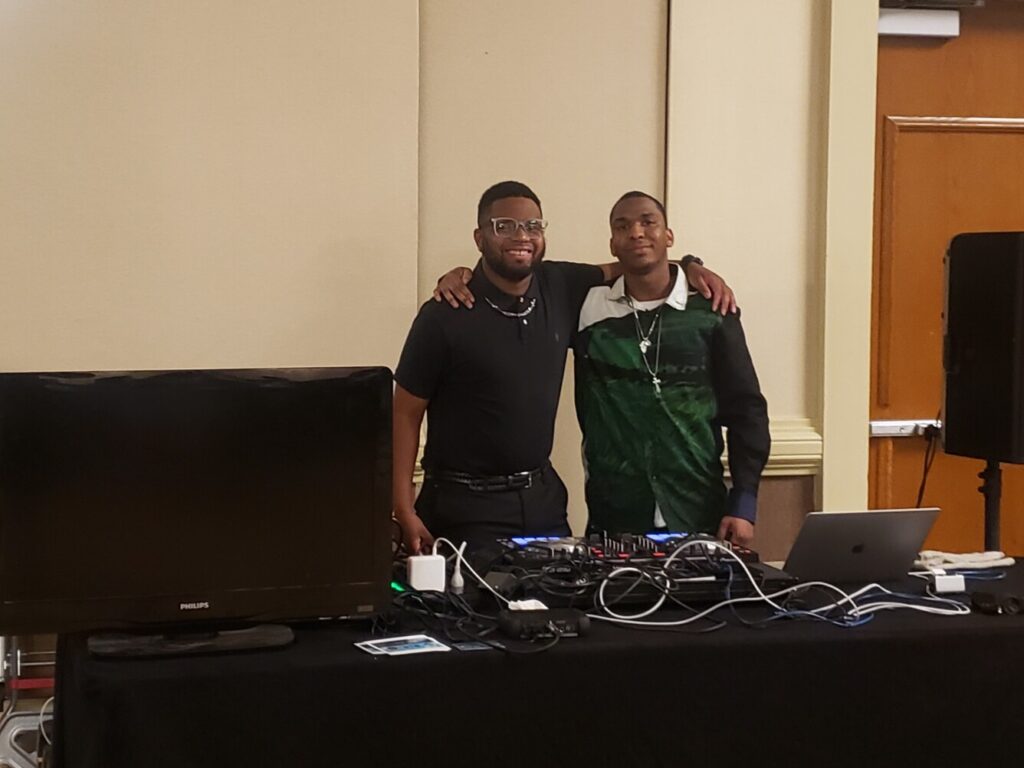When Lena Irish first heard from her doctor that her child had autism, she was confused, scared, and didn’t know where to begin. Her son Todd was almost 4 years old at the time. All she knew about autism was what she had seen in movies like “Rain Man.” “When we received that diagnosis, it was very hard to take. I thought that this is going to be Todd’s life,” remembers Lena today, more than 20 years later.
On an ordinary day at the hospital, a loud fire alarm suddenly turned Todd’s life upside down. Lena still vividly remembers that day.
“The fire alarm went off. It was this really loud, beeping noise went throughout the hospital trying to tell everybody to leave. Todd just started covering his years, and he just lost it. Just throwing this humongous tantrum on the floor, and that was really my first sign that this was something bigger than I thought it was,” Lena recalls.
What is Autism Spectrum Disorder?
According to the CDC, Autism Spectrum Disorder (ASD) is a developmental disability caused by differences in the brain. Scientists believe that multiple causes contribute to the development of ASD, leading to changes in the most common ways people develop.
People with autism share similar symptoms, including problems with social interactions, difficulties with communication, behavior issues, repetitive behaviors, and obsessive interests. Autism affects each person differently, with symptoms ranging from mild to severe. About 40% of individuals with autism are non-verbal, 90% have sensory issues, 40% have an anxiety disorder, and 30% have an intellectual disability.
“It’s important for society to understand that individuals with autism desire social connections,” says Claire Dees, Executive Director and co-founder of Spectrum Autism Support Group, a local non-profit organization providing support, education, and resources for individuals and families impacted by autism.
However, those diagnosed with autism may struggle with knowing how to interact and engage with others due to social anxiety. Some individuals may even purposefully avoid social situations. Many adults diagnosed with autism later in life struggle with building friendships, as Claire recounts a 49-year-old woman who recently called her for advice on how to make a friend. This woman has a full-time job and multiple college degrees but has never had a friend and has been struggling with depression.
“Understanding and acceptance are key to helping individuals with autism live fulfilling and meaningful lives,” Claire adds.
Autism in Adulthood
Todd is just one of the nearly 2.5 million autistic adults living in the US alone. Autism is the fastest growing developmental disability in the US, with the numbers continuing to rise, according to the latest data. Based on statistics from the CDC for the period 2000-2018, one in 36 children have been diagnosed with autism.
Data also shows that boys are four times more likely to be diagnosed with autism, and a staggering 80% of autistic women are diagnosed after the age of 18. Claire, who has over 35 years of experience in the field of disabilities as both a parent and a professional, explains that Spectrum Autism Support Group serves over 2000 individuals with autism and their families each year through support groups, camps, respite, social skills groups, family events, and community education and training.
“We are seeing more and more females diagnosed and coming into our programs. Women are often better at masking their symptoms. Masking is a term you hear a lot. They learn how to fit in and emulate social behaviors, but it can be exhausting for them to mask their true selves all the time,” says Claire Dees.
“For many individuals, receiving a diagnosis of autism can come as a relief, as it helps them understand why they are different and can lead to reduced symptoms of depression and anxiety,” Claire explains. Increased acceptance and understanding from society have also helped improve the lives of individuals living with autism.
Over the next decade, approximately 1 million teenagers are estimated to enter adulthood and age out of school-based autism services. Unfortunately, teenagers with autism receive healthcare transition services only half as often as those with other special healthcare needs. Moreover, young people who have autism coupled with associated medical problems are even less likely to receive transition support. As a result, many young adults with autism do not receive adequate healthcare for years after they stop seeing a pediatrician.
Autism and Job Opportunities
One of the biggest challenges faced by individuals with autism is deficits in executive functioning skills, which can impact their ability to interpret social cues and develop certain skills. This can in turn affect their success in relationships with peers and job performance. Individuals diagnosed with autism may struggle with planning and prioritizing, starting and completing tasks, controlling impulses, emotional regulation, transitioning from one activity to another, working memory, and organization skills, all of which can impact their relationships with peers and job success.
Therefore, it is important to focus on developing job skills, social skills, and self-advocacy skills, as emphasized by Claire. Employers need to be aware that individuals with autism are often dependable, loyal, honest, and hardworking. Moreover, many of them possess exceptional attention to detail, visual skills, long-term memory, and novel approaches.
For individuals with autism looking for employment, Claire advises them to truly understand themselves, their strengths, and weaknesses. They should decide whether to disclose their condition or not, act and speak confidently, walk into interviews with a smile, make eye contact, and practice ahead of time to polish their interview skills. It is also important for them to speak up about what makes them comfortable and what doesn’t.
“With the current situation, people are looking for good dependable employees, so it is an ideal time for people with disabilities and autism to get those jobs,” says Claire.
For employers looking to hire autistic individuals, Claire advises giving them the questions ahead of time so that they can be prepared, avoiding generic questions like “tell me about yourself,” and instead being specific. It is crucial to know each individual candidate individually, as they are all unique and different. Understanding what works best for each individual is key to their success.
“Instead of setting them up for failure, set them up for success,” emphasizes Claire, underlining the importance of creating an inclusive and supportive environment for individuals with autism in the workplace.
More Than Twenty Years Later
Twenty-one years later, Todd recently turned 25 and holds almost a full-time job as a production worker at Bobby Dodd Institute. He now lives independently with a roommate, has a girlfriend, and loves making new friends. His smile never leaves his face, and he feels happy and accomplished.

Todd’s biggest challenge so far is obtaining his driver’s license, for which he has been preparing. He dreams of becoming a radio DJ and is confident that he will soon own his own radio DJ business.
Todd’s mom, Lena, first found out about Bobby Dodd Institute when he was in high school. She is grateful that Todd is associated with an organization that recognizes the importance of incorporating individuals with disabilities in the workforce. Finding the needed support and information has been crucial for Todd and his family.
As Lena says, “When I look at how far Todd has come, I know this wasn’t just because of the people around him. I really do think it is because of God. I think that God placed in our lives different people and organizations like Bobby Dodd to change the perspective of what Todd’s life would look like.”


